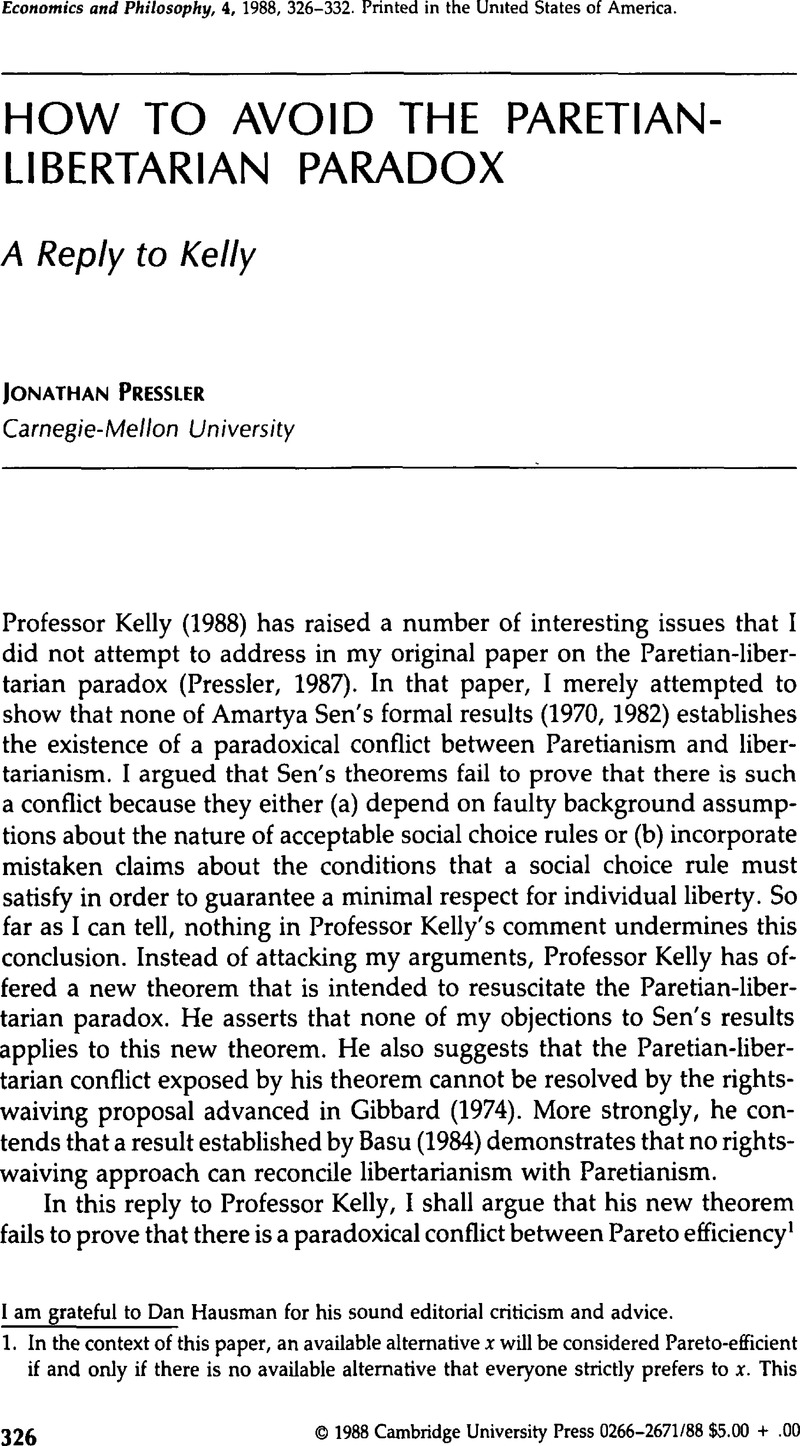Crossref Citations
This article has been cited by the following publications. This list is generated based on data provided by Crossref.
Riley, Jonathan
1990.
Rights to Liberty in Purely Private Matters: Part II.
Economics and Philosophy,
Vol. 6,
Issue. 1,
p.
27.





